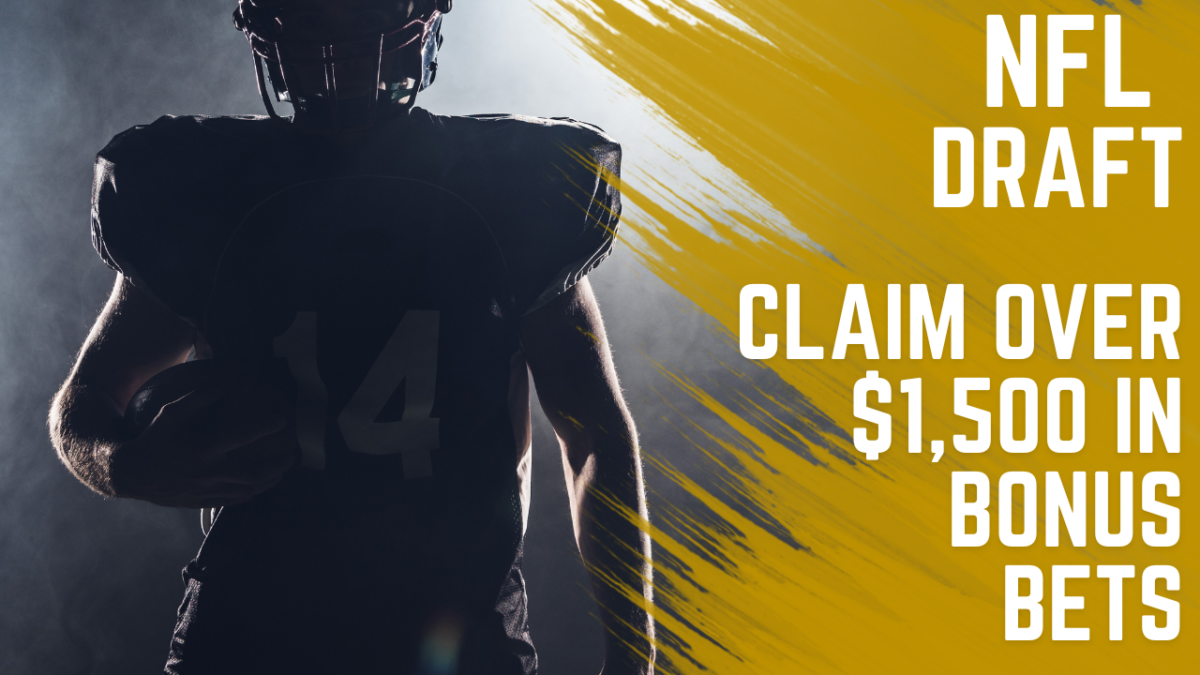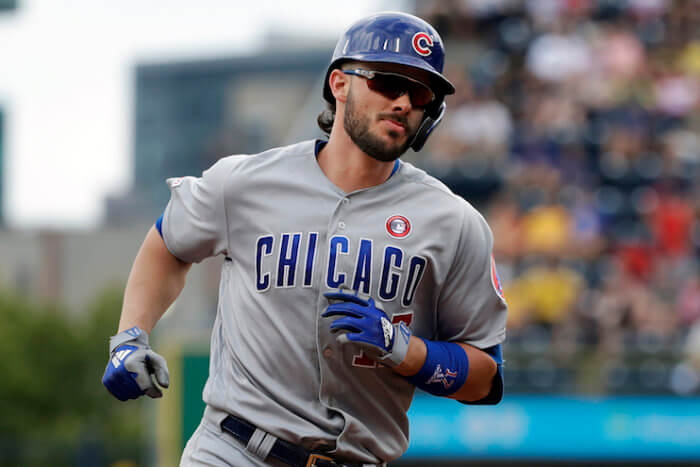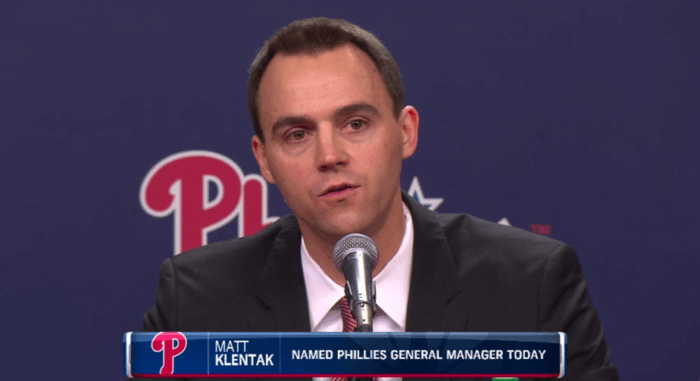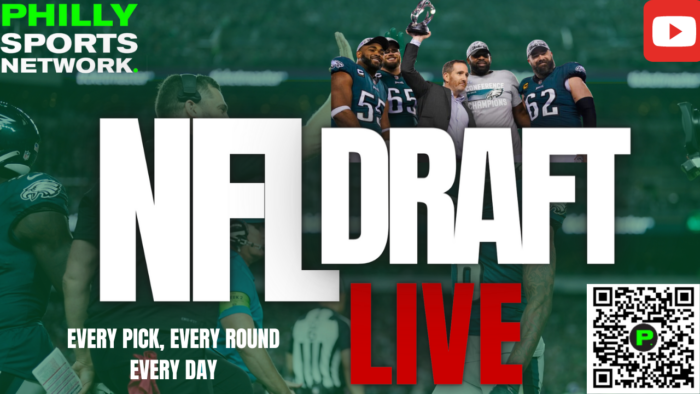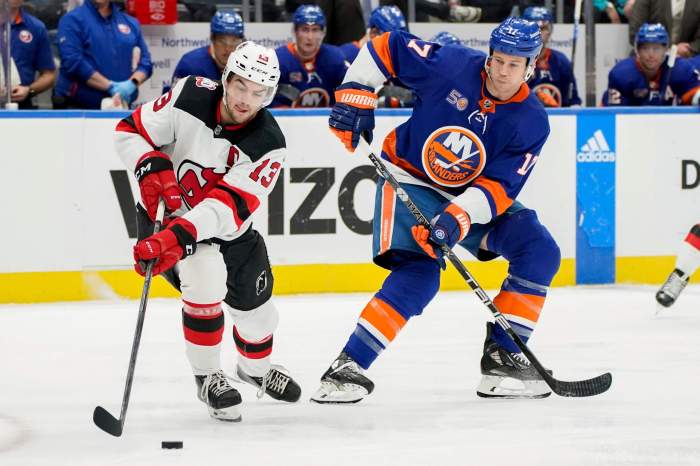In the last 12 months, the Phillies have traded seven players in exchange for 15 prospects as they continue to rebuild.Not all of Philadelphia’s young arms will pan out, but if even half of them can, the Phillies have a promising future. Here is a look at the best, and worst case scenarios for the most important pitchers in Philadelphia’s system: Aaron Nola
Best Case: Nola, Philadelphia’s first-round pick in 2014 establishes refined control of his fastball and pairs that with his plus changeup to have success in the same vein as Greg Maddux and Jamie Moyer. The 22-year-old is more likely a mid-rotation starter, rather than an ace, but his baseball IQ cannot be overlooked. Worst Case: Nola struggles to adapt to gradually diminishing fastball velocity, and his other pitches, such as his average slider, never truly develop. This pushes him towardthe back end of the rotation, where, at worst, he becomes a dependable innings eater. 2. Jake Thompson
Best Case: Thompson’s fastball, which served as a disappointment in 2015,due to a lack of increased velocity, takes a step forward and the 22 year-old uses it in conjunction with his wipeout slider to become a dominant back-end reliever. Worst Case: Thompson, who was acquired in the Cole Hamels trade, never sees his fastball velocity progress, and his small arsenal of pitches stunts his growth, forcing Philadelphia to use him in middle-relief, or as a fifth starter. 3. Mark Appel
Best Case: Appel finds the form that made him a No. 1 overall pick, and sheds the numbers that have made him consistently mediocre in the minors. Following in the footsteps of Jake Arrieta and Wade Davis, Appel succeeds with a change of scenery and becomes the Phillies’ ace going forward. Worst Case: Appel is never able to parlay his impressive stockpile of pitches into on-field success and follows in the footsteps of good, young prospects like Kyle Drabek, who could never really live up to their potential. 4. Vincent Velasquez
Best Case: Velasquez, who came over in the Ken Giles trade, turns his above average fastball, and changeup, into plus pitches and becomes a front-line starter in Philadelphia’s organization for years to come. Worst Case: Velasquez, who has outperformed expectations for his career, fails to out-run the injury history that has plagued his career up until now and regresses far enough to the point that he is not a realistic long-term option. 5. Jerad Eickhoff
Best Case: Eickhoff uses a fastball that has topped out at 97 with his big curveball, builds on a 2015 when he posted a 2.65 ERA, and becomes the steal of the Cole Hamels trade.
Worst Case: Eickhoff never figures out lefties, who hit .300 against him in 2015, and becomes a back-end starter or even a long reliever.
Phillies pitching staff: best and worst case scenarios for Aaron Nola, Mark Appel, Jerad Eickhoff and more
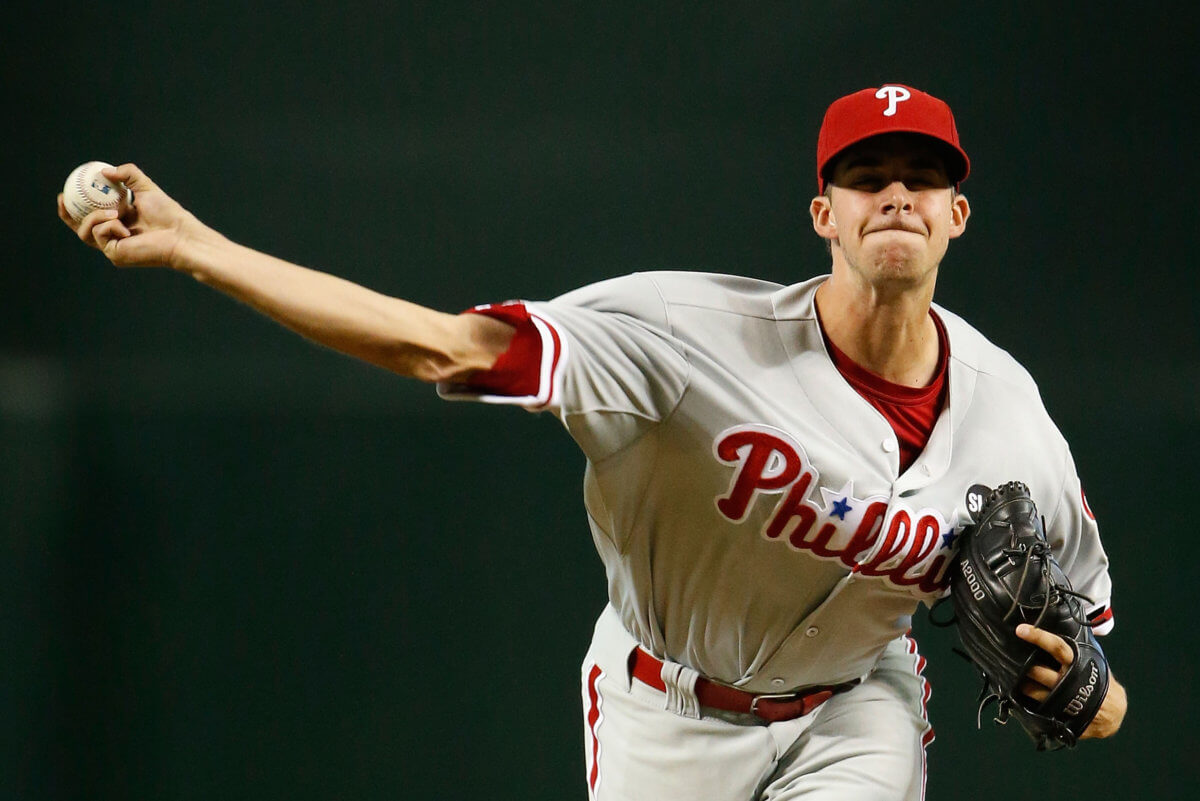
Getty Images




















